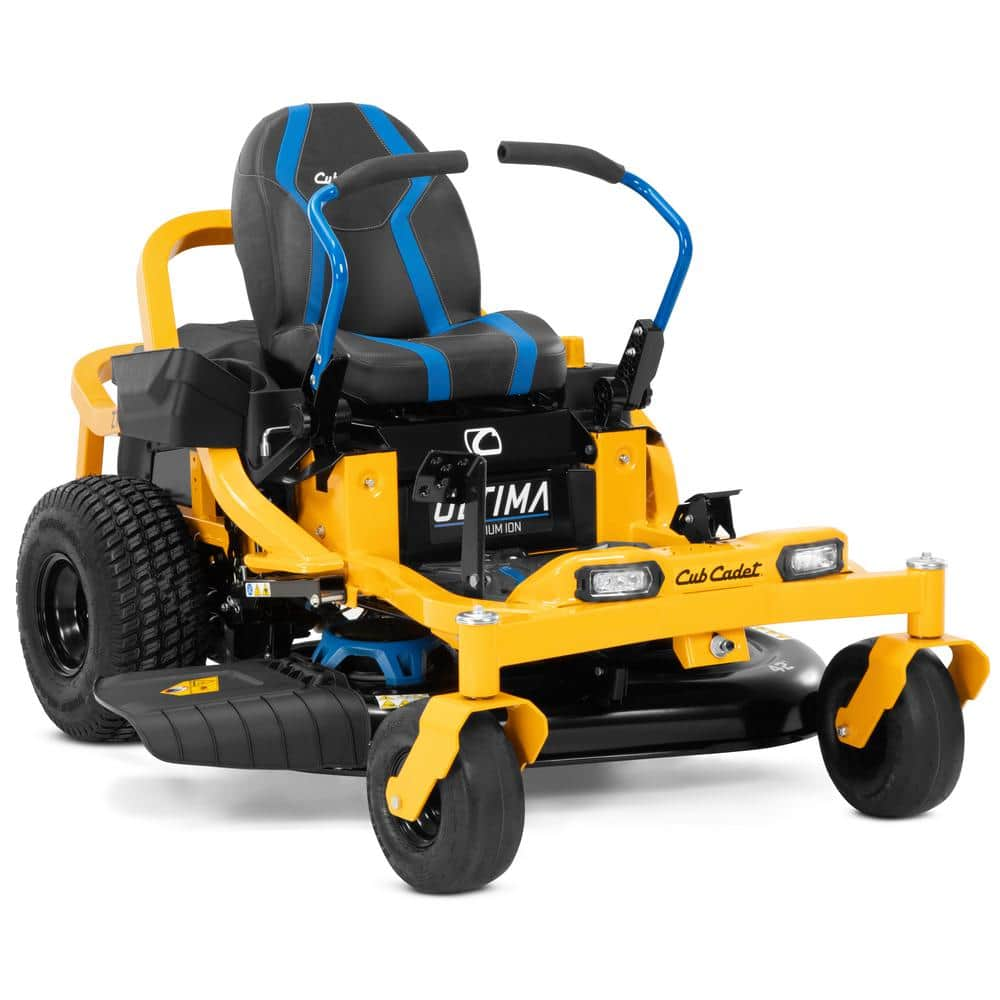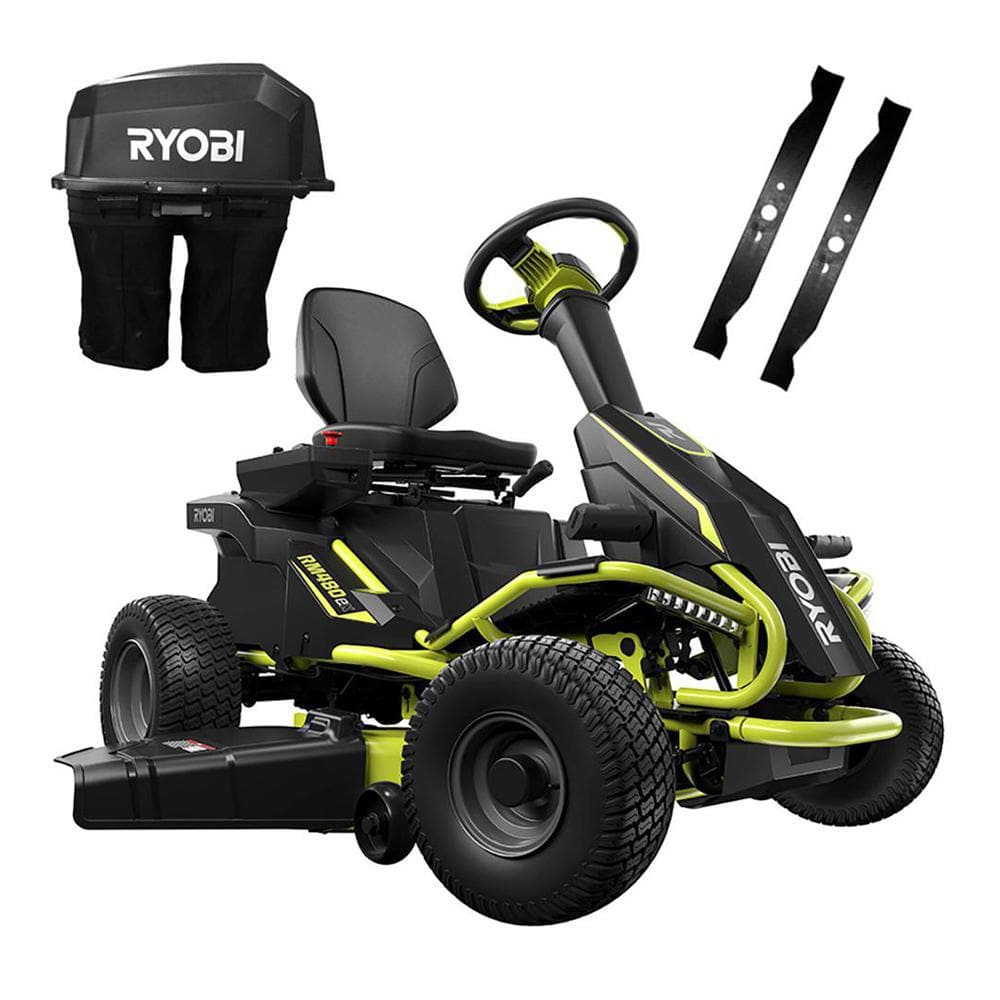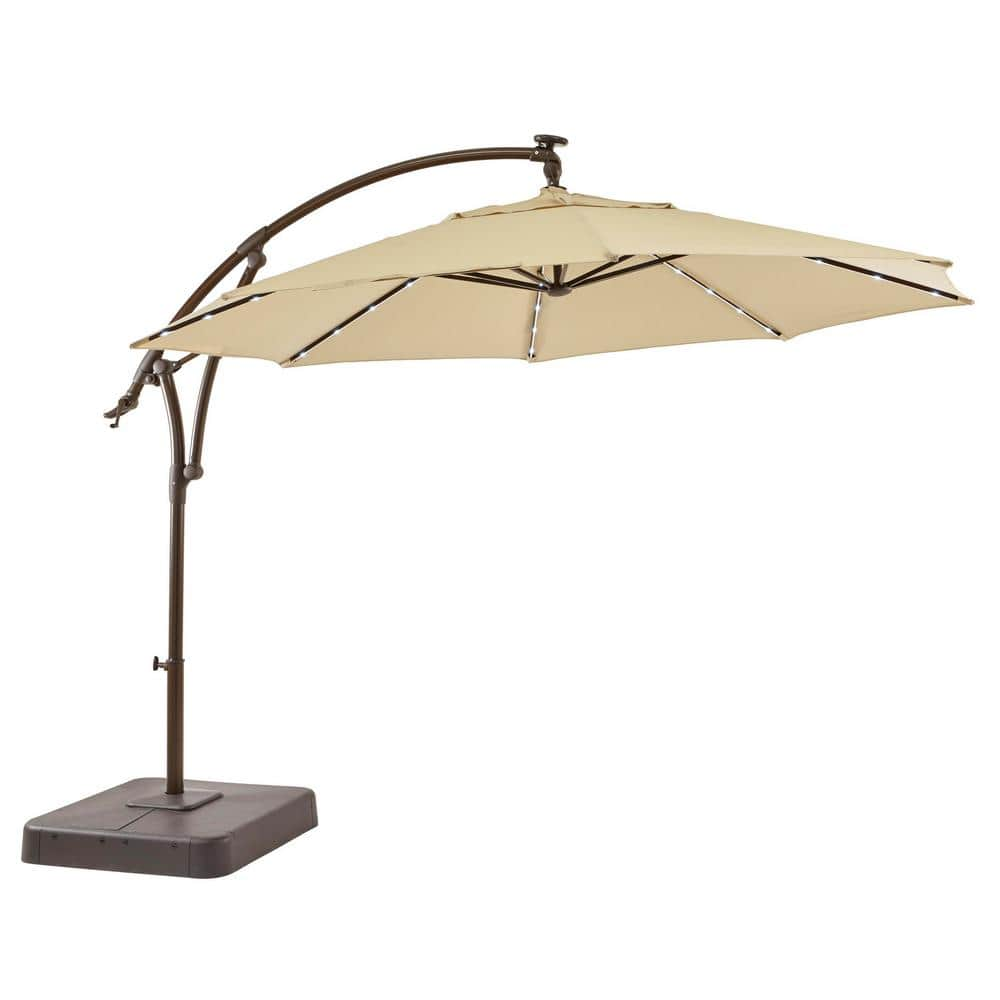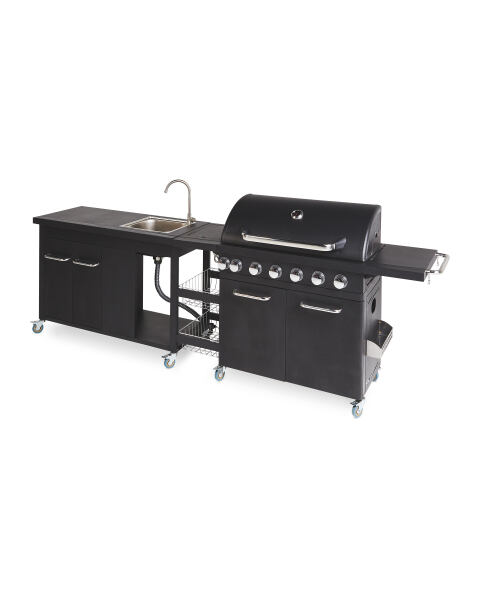Cub Cadet Ultima ZT1 42 in. 56-Volt MAX 60 Ah Battery Lithium-Ion Electric Drive Zero Turn Riding Lawn Mower
Battery operated: no gas, oil, air filters, spark plugs or belts. Cut up to 2-acres per charge, full recharge in only 4 hours. Features a high-back seat and a USB charging port.
The industry-leading Ultima Series that delivers strength, comfort and quality is now available in a fully electric lithium-ion battery powered zero turn mower. This latest battery technology provides a quiet operation and extended run time with rapid recharge and no power fade, delivering uncompromising power, minimal maintenance and the cut quality you can expect from its gas counterpart. The ZT42E comes equipped with a 42 in., twin blade cutting deck that can power through up to 2 acres without any power fade. Automotive-grade corrosion defense system will protect your 2 in. x 2 in. tubular steel frame from wear and tear, preserving your lawn mower. Large rear tires provide enhanced traction on uneven terrain. Recharge quickly in just 4-hours. Ride in comfort up to 7 MPH with a premium cut and sew high back 20 in. seat, 2 USB charging ports and a cup holder. This hassle-free, easy-to-use mowing experience is all backed by an industry leading warranty, 3-year limited residential and a 4-year limited battery.
- Quiet operation with no engine maintenance, no oil changes, no belts and no gas provides a hassle-free, easy-to-use mowing experience
- 56-Volt MAX, 60 Ah, 3000-Watt hour lithium-ion battery that can be charged using a standard 110-Volt outlet
- No exhaust, carbon monoxide or unburned hydrocarbons from the on-board source of power
- 2 in. x 2 in. tubular steel frame with an automotive-grade corrosion defense system to protect against wear and tear
- Backed by a 3-year limited residential and 4-year limited battery warranty
- Dual automatic electric transmissions quickly leaves your lawn with a professional finish
- 20 in. x 8 in., rear wheels provide excellent traction, minimize turfing and provide a better ride on uneven ground at higher speeds
- Equipped with 2 USB ports to charge devices while you mow and a cup holder for your beverage
- 13 Gauge, 42 in., twin blade deck with 3 mowing options: side discharge, bagging or mulching
- Foot pedal with spring assist deck lift and 15 positions
- LED headlights for advanced lighting and maximum visibility to mow when you want
- Ride in comfort with a 20 in. premium high-back adjustable seat, a rubber floor mat and a durable, advanced polymer seat suspension system
- Adjustable lap bars and industry-exclusive ergonomic hand grips optimized for comfort providing you the confidence to maximize your speed and reduce operator fatigue
- RZT comes fully crated and requires minor assembly
Additional information
| Assembled Depth x Height x Width (in.) | 82 x 35 x 48 |
|---|---|
| Cutting Width (in.) | 42 |
| Front Wheel Size (in.) | 11 |
| Mower Deck Width (in.) | 42 |
| Rear Wheel Size (in.) | 20 |
| Turning Radius (in.) | 0 |
| Certifications and Listings | CARB Compliant |
| Manufacturer Warranty | 3-Year Limited Warranty |






by Art
The mower is a bit tricky to start due to safety features requiring to apply the brake and push the button holding it a few seconds. It also requires some learning to get used to too responsive and powerful wheel motors to make it move in the direction you want. Once you learn all of that you have a very quiet and very powerful machine that never gets stuck anywhere. I used it to easily pull a pretty heavy cart where my old Husqvarna 24hp mower would definitely fail to pull due to poor wheel traction with the ground. No disgusting fumes, no noises and no hassle with the fuel and maintenance is a huge plus for me. Hope it lasts a long time.
by Gary
The mower arrived yesterday, well-crated and in good shape. Final assembly was easy and quick, no more than 5 minutes or so. The hardest part was getting it off of the pallet and craft without hitting the deck. We were able to do it, using 2 guys in the front, lifting up the front section, while one pushed from the rear (make sure to disengage the parking brake!) I did not have any errors as others have described when attempting to use the mower for the first time. The mower arrived in a low state of charge, so I allowed it to fully charge before moving the unit. The drive mechanism is a bit “jerky” when first engaging. Perhaps there will be an update to smooth out the power curve, but it’s not that bad and I’m sure we’ll adapt to it quickly. Overall, I’m impressed so far. Time will tell how this holds up, but I’ll take a few growing pains to not have to deal with small-engine maintenance.
by Wallace
Having driven nearly every manufacture of zero-turn mower, call it an idiosyncrasy or just good times, from gas to diesel, propane to electric I will say firstly the cons. Initially, see the question regarding E108 fault code, as was the case with me, yet no help for me from the manufacture. Next the electric response isn’t as fluid as hydrostatic. I thought this was strange, given it is DC electrical current, and we know DC power is paramount because of its smooth flow and even voltage. Just increase the current thank you, but alas at the onset it can sputter, and if you leave it there it will be a jittery ride, but it is minutely responsive. That means small movements mean movement. Takes a minute to get used to. Especially when historically you have to move your arms to move a zero-turn. Slight movements here please, or you will run over a fence, as in my case, or whatever happens to be at your side- that happened in the first 5 minutes, so keep folks onlooking at a distance when you begin please. Luckily no harm no fowl in my regard. Despite the technological/electrical learning curve it is a great mover, and I highly recommend it. See my answer to question number one regarding fault code E108, for I’d like to save you the phone call, as Cub Cadet recommended, and an irritated wife who can’t get out of the garage, since they didn’t have an answer for me. At any rate, it’s relatively quite, triple fast, I scarcely say anyone could mow out of slow with this thing- challenge posted, nice seat but it should have the arms attached at $4500 not an accessory, oh one more thing you might find irritating, as I do when repeating nonsensical actions. When you exit the mower for whatever reason, move a branch, fix the fence you just ran over, get a drink- water please, you have to set it back to initial mow setup each time before you can start mowing again. This means locking the brake, setting the levers outboard, pushing start again, then you can push the mow button. This should have an over-ride to keep you fluidly mowing not repeating steps from the onset. I realize and appreciate safety as a foundation- initially, but once that has been established let me get to work; I have acknowledged what I am doing- thank you. It is a great mower, your neighbor will love it, your brother-in-law will call it HAWT, your daughter will want to immediately mow with it and letting your offspring expound their sense of purpose and prowess you will allow this for fostering their acumen is a fatherly foundation- just go get the wire and fence stretcher first.